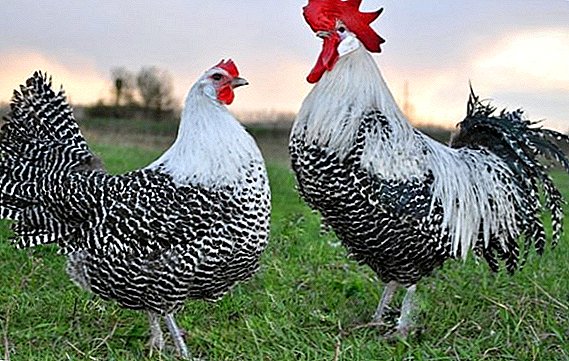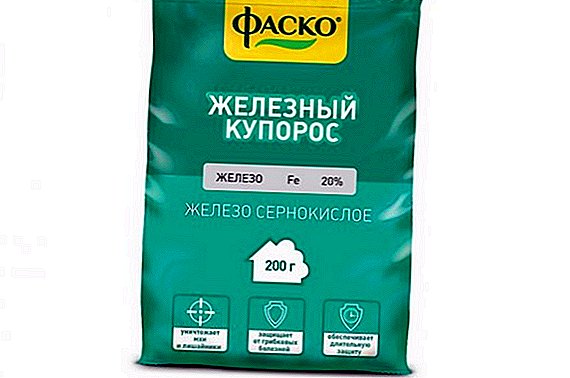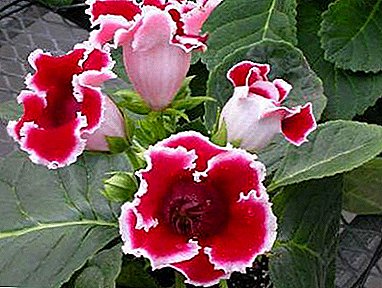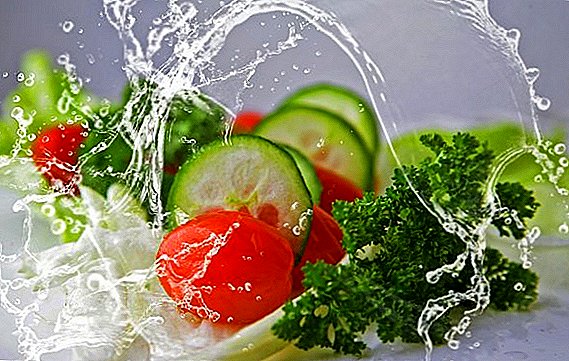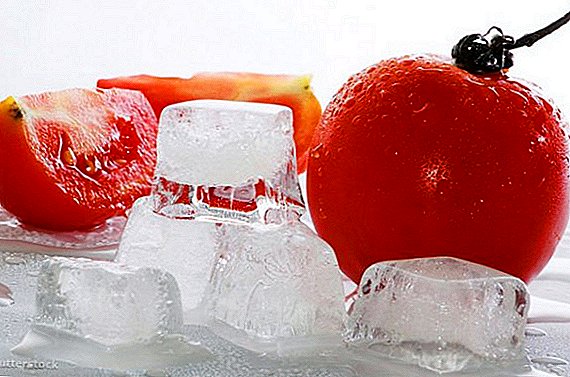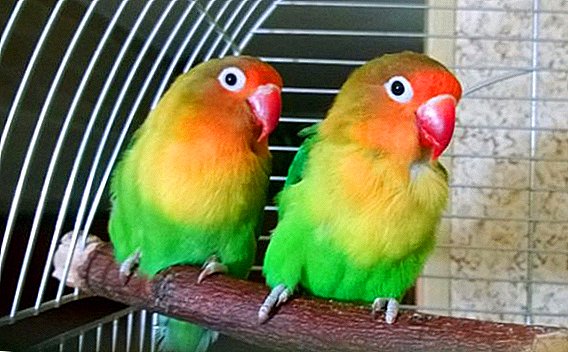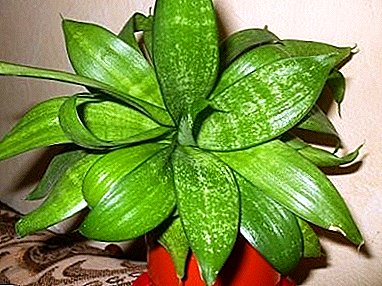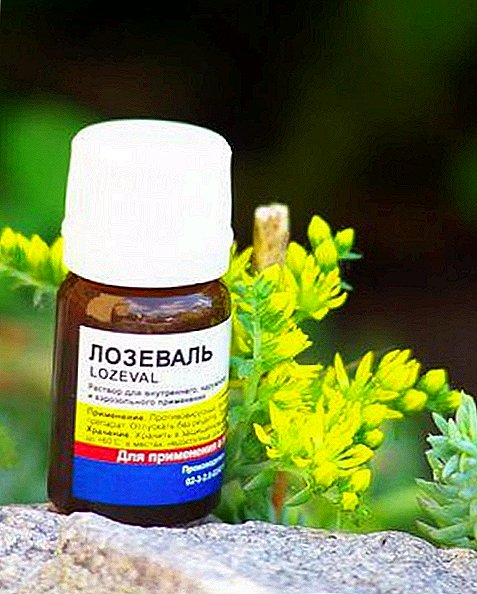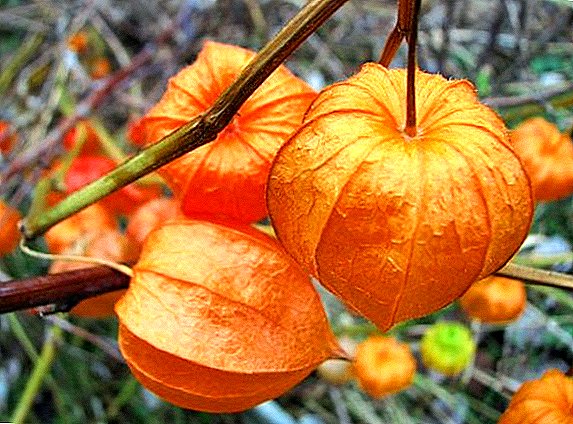 Physalis is a very attractive plant, which summer residents love for unpretentiousness and resistance to various pests. Some of its varieties are capable of producing useful fruits, which doubles the importance of the plant, and therefore, we will discuss below how to grow Physalis in its own area.
Physalis is a very attractive plant, which summer residents love for unpretentiousness and resistance to various pests. Some of its varieties are capable of producing useful fruits, which doubles the importance of the plant, and therefore, we will discuss below how to grow Physalis in its own area.
Physalis: plant description
Even if you are not fully aware of what physalis is, when you see it in the picture, you probably recognized this beautiful plant. Physalis has about 100 species, among which only two are domesticated - Mexican vegetable and strawberry sweet. There is also an ornamental Physalis, which, however, brings poisonous fruits, although it is distinguished by its visual appeal.
Did you know? Physalis has many other names in our country. Among them are the "emerald berry", "earthen cranberries", "cherry cherry", "Chinese lanterns".
 Although even in the territory of Ukraine one can very often meet wild Physalis, it is not recommended to transfer it to your summer cottage. Firstly, it is not as attractive as a varietal, and secondly, its fruits are very toxic. Therefore, for your suburban area is better to buy the seeds of strawberry Physalis, which are imported to us from South America. The fruits of such a plant can be consumed raw and dried, and even prepare various preserves and sweets from it. Often Physalis fruits are added to salads or used to decorate cakes.
Although even in the territory of Ukraine one can very often meet wild Physalis, it is not recommended to transfer it to your summer cottage. Firstly, it is not as attractive as a varietal, and secondly, its fruits are very toxic. Therefore, for your suburban area is better to buy the seeds of strawberry Physalis, which are imported to us from South America. The fruits of such a plant can be consumed raw and dried, and even prepare various preserves and sweets from it. Often Physalis fruits are added to salads or used to decorate cakes.
If you choose Mexican Physalis, its fruits can be used in the same way as tomatoes. In their raw form, they can be added to salads or hot dishes, pickled or cooked sauces and jams.
Choosing a place for planting Physalis
But in order to get the tasty fruits of Physalis, the plant needs to ensure proper cultivation and care. The most important thing for him is the choice of a landing site, the main requirements for which are in the following points:
- The flower bed under Physalis should be well cultivated, that is, if it had been growing other crops or flowers for many years, this is very good;
- Physalis loves well-lit areas that are covered with sunshine all day long;
- In no case should melt and rainwater accumulate in this area;
- on the plot it is necessary to regularly remove all weeds;
- Physalis practically does not survive on acidic soils, and also often gets sick; therefore, if you have no other place for planting, take care of liming the soil in advance.
Important! Physalis survives well on the sites after any crops, but not after their relatives of the nightshade - potatoes, tomatoes and peppers. Before planting Physalis, it is necessary at least 2-3 years to plant the area with other crops, so that all pasanidae pests disappear from the soil.
In the same case, if you have no ideal place for physalis planting at the site, then it can be artificially created. For example, in overly moistened or constantly flooded areas for planting plants, it is worth preparing combs from soil up to 40 cm high.
Features of growing Physalis from seeds
 Before you buy Physalis, it is important to learn how to plant and grow this shrub. The only way of its reproduction is sowing seeds and getting seedlings from them.which can then be planted in a prepared place.
Before you buy Physalis, it is important to learn how to plant and grow this shrub. The only way of its reproduction is sowing seeds and getting seedlings from them.which can then be planted in a prepared place.
Physalis involves growing from seeds, but they can be sown as cups and plant seedlings in home or greenhouse conditions, or planted directly in open ground. In order to grow Physalis for seedlings, it is necessary to prepare a heated greenhouse film, a well-covered greenhouse, or an opaque film under which seeds can be sown. The soil before sowing is necessarily loosened, weeds are removed and fertilized, if there is an urgent need.
 When sowing, the seeds need to be buried 1-1.5 cm into the soil. You do not need to try to sow as many plants as possible on a small area, since excessive density will necessarily lead to the stretching and weakening of the seedlings. The optimum temperature for the first shoots is from 15 to 17 ° C, so during the day you can remove the film from them.
When sowing, the seeds need to be buried 1-1.5 cm into the soil. You do not need to try to sow as many plants as possible on a small area, since excessive density will necessarily lead to the stretching and weakening of the seedlings. The optimum temperature for the first shoots is from 15 to 17 ° C, so during the day you can remove the film from them.
If sowing seeds for seedlings is carried out in late March - early April, then it is planted in open ground not earlier than the last weeks of May, or even in early June. Physalis seeds can be planted in open ground only when the soil begins to warm to 4- 6˚C at a depth of 10 cm. In this case, it is also important to loosen the soil for the seeds, clean them of weeds and fertilize. During sowing on 1 square meter you should spend only 0.1 g of seeds. Between the rows of Physalis should be indented 50-60 cm.
Important! Physalis seeds are very small, so in order to sow them as evenly as possible, first mix them with sand. You can also mix Physalis seeds together with lettuce or radish seeds, which will act as a lighthouse culture and will be removed even before the moment when Physalis turns into a powerful seedling.
Usually, seedlings still have to be thinned out, leaving a distance of 50 cm between bushes. Thus, by the time of flowering, no more than 5 plants should remain per 1 square meter.
Planting rules Physalis seedlings
How physalis grows, you have already learned, it remains only to get acquainted with the rules of transplanting its seedlings so that it not only takes root in a new place, but also as quickly as possible sets out in rapid growth.

What should be the soil
Physalis, though it easily takes root on soils of different types, but the soil for it should always be loose. Therefore, before planting the seedlings, it is imperative to dig the site well to a depth of 20 cm in order to fill the soil with air. This should be done in early spring, not forgetting to also fertilize the land with well-rotted manure or compost. At 1 sq. M of land area will need about 30 kg of fertilizer.
Important! In no case do not fertilize the soil under physalis with fresh manure, as this may adversely affect the growth of the plant.
How to plant seedlings
In late May - early June, seedlings grown in a greenhouse or under a wrap should be seated. On the day of transplantation from the very morning, seedlings should be watered abundantly, which will make it easier to detach it from other plants, without causing damage to the roots. When physalis is planted per 1 square meter, no more than 4 plants should fall (if it is a strawberry physalis, 6 plants can be planted in the same area). The space between the bushes can be freely sown with radishes or lettuce, the harvest of which will be removed even before the beginning of the ripening of Physalis.
To make it easier for the plant to take root, transplantation is recommended in the second half of the day, when the sun is not so hot. Watering the plant after transplanting is not worth it so that a hard crust that does not allow air to form on the surface of the soil.
Care for Physalis seedlings
 Physalis during planting and care in the open field manifests itself as an undemanding plant that needs only periodic watering. Unlike relatives of Physalis tomatoes, this plant does not require staking at all, as well as tying. After all, the more new branches are formed on it, the more beautiful it will be during flowering, and the more attractive fruits on it will be formed.
Physalis during planting and care in the open field manifests itself as an undemanding plant that needs only periodic watering. Unlike relatives of Physalis tomatoes, this plant does not require staking at all, as well as tying. After all, the more new branches are formed on it, the more beautiful it will be during flowering, and the more attractive fruits on it will be formed.
However, during growth, carefully study each plant to determine in time the presence of the disease. In this case, all diseased plants are immediately removed from the bed and burned, thus preventing the further spread of the disease.
How to care for adult Physalis
Adult Physalis needs to pay even less attention. The only thing that should be regularly taken care of is his preparation for the winter. Before the onset of cold weather, the plant is completely cut off to the very base, and leaves are removed from its branches, while the fruits are left and suspended for drying. Very often they are used for decorating bouquets. If the plant is an annual plant, its roots are also removed from the soil, which is digged and mulched with peat.
Did you know? The fruits of Physalis are very beneficial to health, so they are often used as an antiseptic and painkiller. Regular consumption of them can have a diuretic and choleretic effects.
Despite the simplicity, physalis will be very grateful to you for making additional mineral fertilizers during the growing season, especially if it has to grow on depleted soil. In this case, 10 square meters will need to apply:
- 35 g of nitrogen substance;
- 13 g of phosphorus;
- 45 grams of potassium;
- 43 g of calcium;
- 9 g of magnesium.

Physalis: harvesting and storage of the crop
For many summer residents, the cultivation and care of Physalis is directed only at obtaining its tasty fruits, which ripen very unevenly. The first become suitable for use fruits that are located below the ground. The fact that the fruits are ready to collect, you will tell their appearance: plant covers will become dry and faded. Also from fruits very pleasant aroma will extend, their coloring will change. If the fruits do not tear in time, they will begin to fall to the ground.
 It is worth considering that even the fallen fruits in dry weather do not threaten. However, at high humidity, they can begin to rot, or the caterpillars can hit them. Therefore, in inclement weather it is not worthwhile to collect the fruits, and if it is not possible to do otherwise, then after collecting them it is important to free them from the covers and give time to dry perfectly. Otherwise, the fruit will not be stored.
It is worth considering that even the fallen fruits in dry weather do not threaten. However, at high humidity, they can begin to rot, or the caterpillars can hit them. Therefore, in inclement weather it is not worthwhile to collect the fruits, and if it is not possible to do otherwise, then after collecting them it is important to free them from the covers and give time to dry perfectly. Otherwise, the fruit will not be stored.
Important! The ripe fruits of Physalis can tolerate even weak frosts, but after them they are practically not stored, although they remain usable.
If you want Physalis to be stored as long as possible in a fresh state, they need to be plucked a little underripe. At the same time, they can be removed from the beds along with the bushes, thanks to which they will get nutrients from the bushes and become especially juicy.
Physalis is a wonderful flower. Due to the absolute simplicity, attractive appearance of the plant, its flowers and fruits, Physalis should decorate every flower garden and every bed. Moreover, having admired them in the summer, the whole winter can be savored by delicious jams or pickles from the fruits of this amazing plant. The main thing is to plant only varietal physalis in order not to fall on the poisonous plant.


